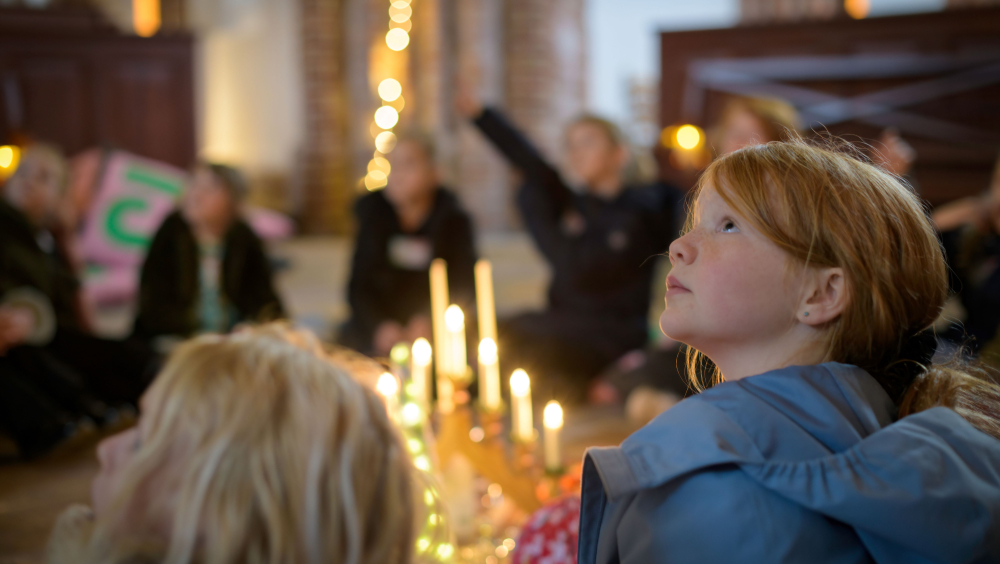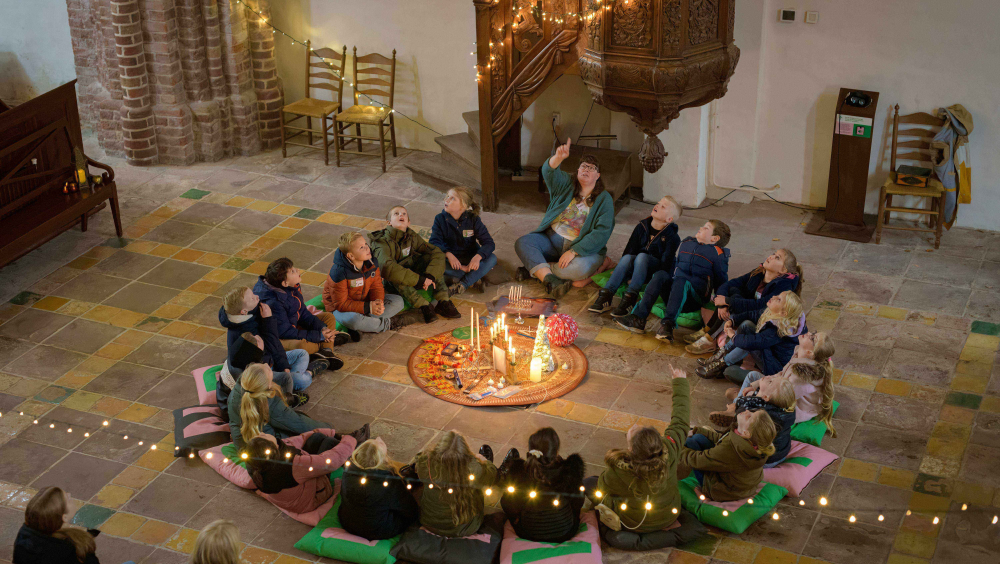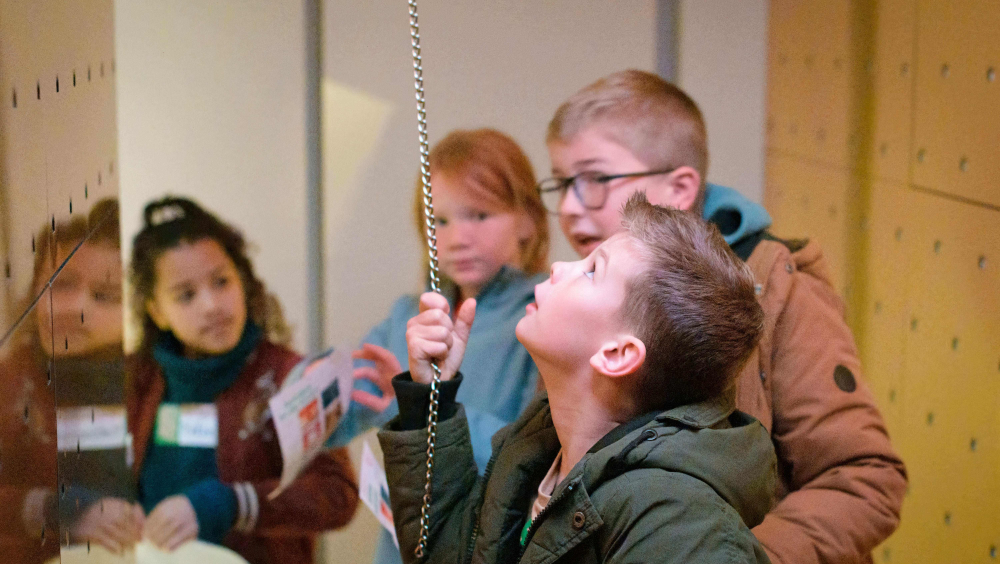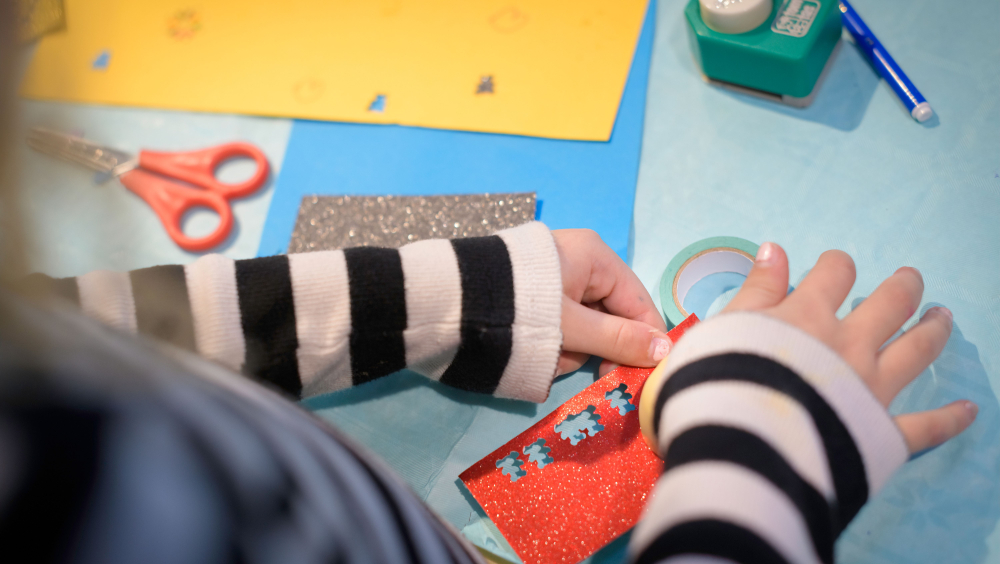Light in the dark: Worldly Festivals of Lights in the School Church
Around the world, candles and other lights are lit when it is dark. On special days, during celebrations and religious feasts, they are burnt for a special reason. They are a symbol, are part of a meaningful story or help create the right atmosphere. Feasts in which light plays a central role are also called festivals of light. This is the theme we talked about in November 2022 with children aged 8 to 11, in the School Church of Garmerwolde, the Netherlands. School classes from all over the province of Groningen came to the medieval church and its detached tower for the Feast! Light and Dark project. The School Church is the place for educational activities of Groningen Churches and deploys the rich heritage for social themes and dialogue in our society.
On arrival at the church it is not yet dark outside, but inside the lights have been dimmed and small lights and electric candles are lit everywhere. The atmosphere is set. The children take their places on cushions in the circle and look around filled with wonder. How big the church is, and how much there is to see! And what is that candelabrum with nine candles? Around the world, candles and other lights are lit when it is dark. On special days, during celebrations and religious feasts, they are burnt for a special reason. They are a symbol, are part of a meaningful story or help create the right atmosphere. Feasts in which light plays a central role are also called festivals of light. This is the theme we talked about in November 2022 with children aged 8 to 11, in the School Church of Garmerwolde. School classes from all over the province of Groningen came to the medieval church and its detached tower for the Feast! Light and Dark project. Light and Dark After the children take in the space, we talk with them about light, dark and feasts such as Hanukkah, Divali and Christmas. What kinds of lamps and lights do you have at home? When do you turn them on or light them? On their birthday, many children blow out candles on a cake, they tell us. One of them says that she sometimes lights a candle in church to remember her grandparents. In the centre of the circle are lights associated with particular feasts: a hanukkiah, a diya and a lighted Christmas tree. The hanukkiah is a candlestick used on the Jewish feast called Hanukkah. During the eight days of Hanukkah, Jewish families light a candle in this candlestick every day, using a special ninth candle. With Hanukkah, Jews celebrate that they were able to use the great temple in Jerusalem again for their faith. The hanukkiah refers to the miracle that the great candelabrum in the temple kept burning for eight days, even though there was only a tiny amount of lamp oil. The diya is an earthenware bowl filled with oil or clarified butter (ghee) that is at the centre during Divali. This Hindu festival lasts several days and celebrates the victory of good over evil. Divali is a feast of reflection, and the light helps. People reflect on what they have achieved that year and still want to do. During Divali many houses are full of diyas and families lay on sumptuous festive meals. The lights also lure in the goddess of fortune Lakshmi, who protects the house and the family. People put up the Christmas tree in their homes around Christmas, an originally Christian feast. The decorated Christmas tree has multiple origins. The lamps and candles that are lit at this time provide light in the darkness. They also refer to the central Christian figure Jesus, who called himself ‘light of the world’ (John 8:12). Supposedly, Germanic tribes and Romans already decorated their homes with branches and whole conifers and pine trees, which symbolised divinity and fertility. Special meaning We talk with children about these special lights and feasts in an accessible manner. We definitely feel that this way we manage to convey the message that lights can have a special meaning for people. Then it is time to let the children get to work with lamps and lights. In the Feast exhibition in the tower, they search for all the special lights that are burning. And they can also set to work with paper and markers, and make their own light holder to take home. Will you make a light for yourself or for someone else who could just use it? That question prompts some children to work on a gift for a classmate or grandma, and even one child’s cat is remembered with a lovely light. Either way, it will be a nice memento of their visit to the School Church in Garmerwolde. Striking up conversations Feasts and celebrations are wonderful subjects to get to know more about traditions and cultures from all over the world, and to get talking about. Because all people celebrate, but what and how they celebrate differs. The School Church of Garmerwolde is the place for educational activities of Groningen Churches. Here children and young people can learn about our special heritage and the backgrounds to all kinds of secular and religious celebrations. The centuries-old tower next to the church houses the exhibition Feast! In East and West, which is part of the national museum project ’Know what you celebrate’. In the exhibition, children and adults are interactively introduced to feasts from Islam and Christianity. Groningen Churches thus deploys its heritage for social themes and dialogue in our society.
Groningen Churches is one of the largest heritage organizations in Europe and part of the Future for Religious Heritage network. The heritage story about the Feast: Light and Dark project is connected to our larger The Feast! In East and West project and exhibition. The exhibition, architecture and design of Feest! In East and West, as well as the combination of Christian and Islamic holidays in one (Christian) mediaeval tower, is unique in Europe. In Europe, many people with different backgrounds live together. In recent years immigrants from Syria, for example, moved throughout Europe, and brought their traditions, stories and religion with them. We do not only want to teach children with a migrant background about the religion that was the largest in the Netherlands (Christianity), but also want to teach their classmates about a religion they might not know. What we aim is to make them equal – Christian, Islamic, Jewish or non-religious traditions, and to provide a platform to talk about what they mean to people in general and to the children present.



